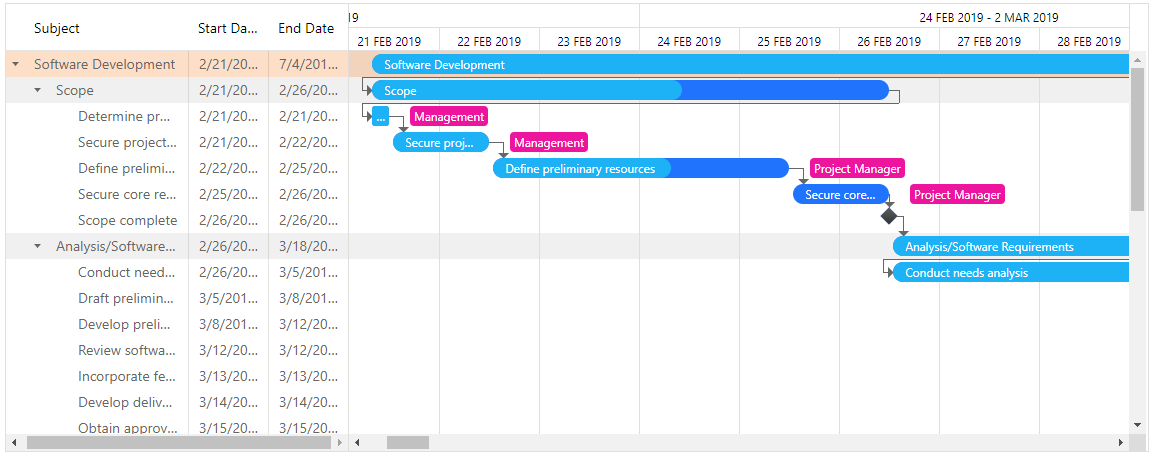MVCxGantt Class
Represents a configured instance of the corresponding extension and is intended to be used mainly as a sender parameter when processing events on the server side.
Namespace: DevExpress.Web.Mvc
Assembly: DevExpress.Web.Mvc5.v25.2.dll
NuGet Package: DevExpress.Web.Mvc5
Declaration
Remarks
Note
To properly follow the ASP.NET MVC pattern, it is recommended to respond to end-user actions on the client-side (see Client-Side API) or to use Ajax callbacks to the server and handle these callbacks using custom action methods (see Using Callbacks).
The Gantt allows you to display the task flow and dependencies between tasks.

Declaration
To declare the Gantt in a View, invoke the Gantt(GanttSettings) or Gantt(Action<GanttSettings>) helper methods. These methods return the Gantt extension that is implemented by the GanttExtension class.
To configure the Gantt extension, pass the GanttSettings object to the Gantt(GanttSettings) helper method as a parameter. The GanttSettings object contains all the Gantt extension settings.
@Html.DevExpress().Gantt(settings => {
settings.Name = "gantt";
settings.CallbackRouteValues = new { Controller = "Gantt", Action = "FeaturesPartial" };
settings.Width = Unit.Percentage(100);
settings.KeyFieldName = "ID";
settings.ParentFieldName = "ParentID";
...
}).Bind(GanttDataProvider.Tasks, GanttDataProvider.Dependencies, GanttDataProvider.Resources, GanttDataProvider.ResourceAssignments).GetHtml()